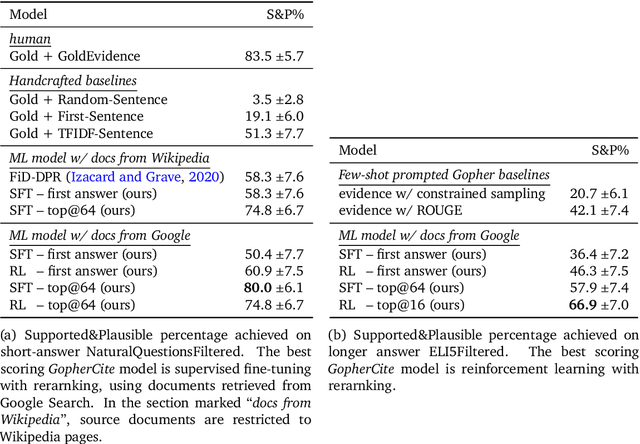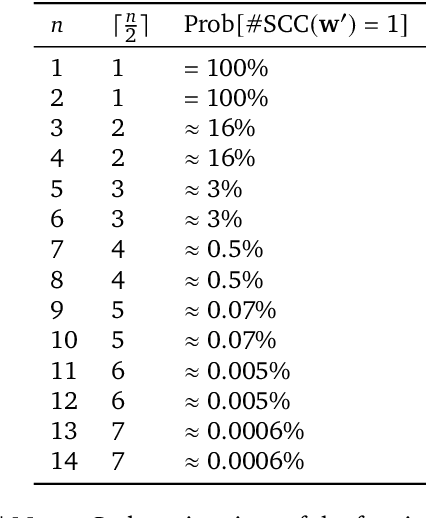Maja Trebacz
OpenAI o1 System Card
Dec 21, 2024



Abstract:The o1 model series is trained with large-scale reinforcement learning to reason using chain of thought. These advanced reasoning capabilities provide new avenues for improving the safety and robustness of our models. In particular, our models can reason about our safety policies in context when responding to potentially unsafe prompts, through deliberative alignment. This leads to state-of-the-art performance on certain benchmarks for risks such as generating illicit advice, choosing stereotyped responses, and succumbing to known jailbreaks. Training models to incorporate a chain of thought before answering has the potential to unlock substantial benefits, while also increasing potential risks that stem from heightened intelligence. Our results underscore the need for building robust alignment methods, extensively stress-testing their efficacy, and maintaining meticulous risk management protocols. This report outlines the safety work carried out for the OpenAI o1 and OpenAI o1-mini models, including safety evaluations, external red teaming, and Preparedness Framework evaluations.
LLM Critics Help Catch LLM Bugs
Jun 28, 2024Abstract:Reinforcement learning from human feedback (RLHF) is fundamentally limited by the capacity of humans to correctly evaluate model output. To improve human evaluation ability and overcome that limitation this work trains "critic" models that help humans to more accurately evaluate model-written code. These critics are themselves LLMs trained with RLHF to write natural language feedback highlighting problems in code from real-world assistant tasks. On code containing naturally occurring LLM errors model-written critiques are preferred over human critiques in 63% of cases, and human evaluation finds that models catch more bugs than human contractors paid for code review. We further confirm that our fine-tuned LLM critics can successfully identify hundreds of errors in ChatGPT training data rated as "flawless", even though the majority of those tasks are non-code tasks and thus out-of-distribution for the critic model. Critics can have limitations of their own, including hallucinated bugs that could mislead humans into making mistakes they might have otherwise avoided, but human-machine teams of critics and contractors catch similar numbers of bugs to LLM critics while hallucinating less than LLMs alone.
Gemini 1.5: Unlocking multimodal understanding across millions of tokens of context
Mar 08, 2024Abstract:In this report, we present the latest model of the Gemini family, Gemini 1.5 Pro, a highly compute-efficient multimodal mixture-of-experts model capable of recalling and reasoning over fine-grained information from millions of tokens of context, including multiple long documents and hours of video and audio. Gemini 1.5 Pro achieves near-perfect recall on long-context retrieval tasks across modalities, improves the state-of-the-art in long-document QA, long-video QA and long-context ASR, and matches or surpasses Gemini 1.0 Ultra's state-of-the-art performance across a broad set of benchmarks. Studying the limits of Gemini 1.5 Pro's long-context ability, we find continued improvement in next-token prediction and near-perfect retrieval (>99%) up to at least 10M tokens, a generational leap over existing models such as Claude 2.1 (200k) and GPT-4 Turbo (128k). Finally, we highlight surprising new capabilities of large language models at the frontier; when given a grammar manual for Kalamang, a language with fewer than 200 speakers worldwide, the model learns to translate English to Kalamang at a similar level to a person who learned from the same content.
Gemini: A Family of Highly Capable Multimodal Models
Dec 19, 2023Abstract:This report introduces a new family of multimodal models, Gemini, that exhibit remarkable capabilities across image, audio, video, and text understanding. The Gemini family consists of Ultra, Pro, and Nano sizes, suitable for applications ranging from complex reasoning tasks to on-device memory-constrained use-cases. Evaluation on a broad range of benchmarks shows that our most-capable Gemini Ultra model advances the state of the art in 30 of 32 of these benchmarks - notably being the first model to achieve human-expert performance on the well-studied exam benchmark MMLU, and improving the state of the art in every one of the 20 multimodal benchmarks we examined. We believe that the new capabilities of Gemini models in cross-modal reasoning and language understanding will enable a wide variety of use cases and we discuss our approach toward deploying them responsibly to users.
Teaching language models to support answers with verified quotes
Mar 21, 2022



Abstract:Recent large language models often answer factual questions correctly. But users can't trust any given claim a model makes without fact-checking, because language models can hallucinate convincing nonsense. In this work we use reinforcement learning from human preferences (RLHP) to train "open-book" QA models that generate answers whilst also citing specific evidence for their claims, which aids in the appraisal of correctness. Supporting evidence is drawn from multiple documents found via a search engine, or from a single user-provided document. Our 280 billion parameter model, GopherCite, is able to produce answers with high quality supporting evidence and abstain from answering when unsure. We measure the performance of GopherCite by conducting human evaluation of answers to questions in a subset of the NaturalQuestions and ELI5 datasets. The model's response is found to be high-quality 80\% of the time on this Natural Questions subset, and 67\% of the time on the ELI5 subset. Abstaining from the third of questions for which it is most unsure improves performance to 90\% and 80\% respectively, approaching human baselines. However, analysis on the adversarial TruthfulQA dataset shows why citation is only one part of an overall strategy for safety and trustworthiness: not all claims supported by evidence are true.
Open-Ended Learning Leads to Generally Capable Agents
Jul 31, 2021



Abstract:In this work we create agents that can perform well beyond a single, individual task, that exhibit much wider generalisation of behaviour to a massive, rich space of challenges. We define a universe of tasks within an environment domain and demonstrate the ability to train agents that are generally capable across this vast space and beyond. The environment is natively multi-agent, spanning the continuum of competitive, cooperative, and independent games, which are situated within procedurally generated physical 3D worlds. The resulting space is exceptionally diverse in terms of the challenges posed to agents, and as such, even measuring the learning progress of an agent is an open research problem. We propose an iterative notion of improvement between successive generations of agents, rather than seeking to maximise a singular objective, allowing us to quantify progress despite tasks being incomparable in terms of achievable rewards. We show that through constructing an open-ended learning process, which dynamically changes the training task distributions and training objectives such that the agent never stops learning, we achieve consistent learning of new behaviours. The resulting agent is able to score reward in every one of our humanly solvable evaluation levels, with behaviour generalising to many held-out points in the universe of tasks. Examples of this zero-shot generalisation include good performance on Hide and Seek, Capture the Flag, and Tag. Through analysis and hand-authored probe tasks we characterise the behaviour of our agent, and find interesting emergent heuristic behaviours such as trial-and-error experimentation, simple tool use, option switching, and cooperation. Finally, we demonstrate that the general capabilities of this agent could unlock larger scale transfer of behaviour through cheap finetuning.
 Add to Chrome
Add to Chrome Add to Firefox
Add to Firefox Add to Edge
Add to Edge